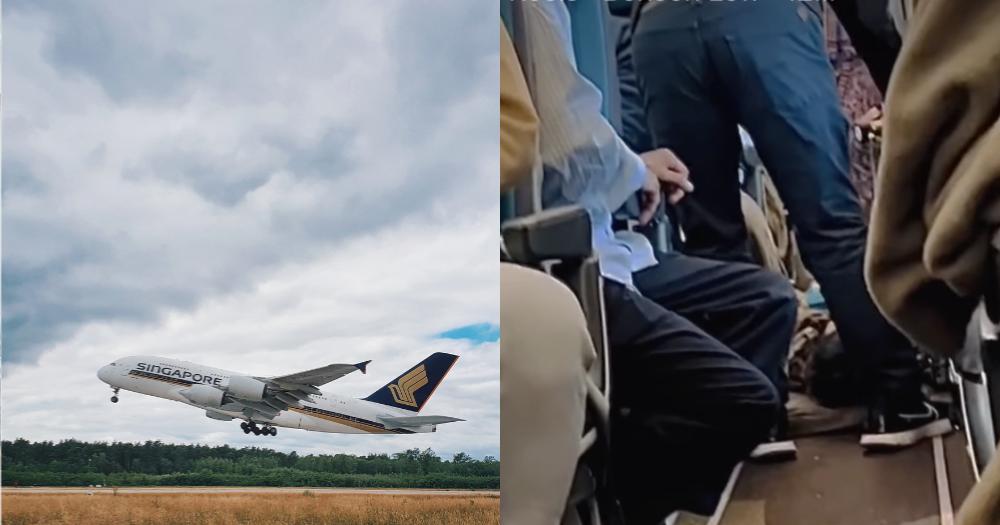Commercial Aviation Industry Faces Uncertainty Amidst Trump's Tariff Threats

Table of Contents
Impact of Tariffs on Aircraft Manufacturing Costs
The imposition of tariffs has directly translated into increased costs for aircraft manufacturers, creating a ripple effect throughout the industry.
Increased Prices for Components
Tariffs on imported components have driven up manufacturing expenses considerably. This impact is felt across various crucial parts:
- Engines: Tariffs on engine components, including advanced materials and sophisticated electronics, have led to a reported increase of 5-10% in manufacturing costs.
- Avionics: The price of avionics systems, responsible for navigation, communication, and flight control, has also experienced a notable surge due to tariff implications. Estimates suggest a 7-12% increase depending on the specific components.
- Other Components: Numerous other essential parts, from landing gear to specialized wiring, have seen price increases, further compounding the overall cost burden.
These increased costs are inevitably passed on to airlines, impacting their operational budgets and potentially affecting their ability to offer competitive fares. Furthermore, supply chain disruptions stemming from tariff-related trade tensions have led to delays in aircraft deliveries, causing further complications for airlines and manufacturers alike. Many manufacturers are exploring alternative sourcing of components from countries not subject to the tariffs, a complex and time-consuming undertaking.
Reduced Competitiveness in the Global Market
Higher manufacturing costs directly diminish the competitiveness of American-made aircraft in the global market. This puts US manufacturers at a disadvantage against their international rivals, particularly those based in countries with more favorable trade policies.
- Loss of Market Share: The potential for losing market share to competitors in countries like Europe and Asia is a real and pressing concern. This could translate into lost jobs and reduced investment in the US aviation sector.
- Impact on Job Creation: Reduced competitiveness jeopardizes job creation within the US aviation industry, threatening the livelihoods of thousands of skilled workers employed in manufacturing, engineering, and related fields. This necessitates a strategic re-evaluation of manufacturing processes and sourcing strategies.
Challenges for Airlines Facing Higher Operating Costs
Airlines are not immune to the cascading effects of these tariffs. Increased costs across the board are significantly impacting their operational efficiency and profitability.
Increased Fuel Prices and Other Costs
While not directly imposed as tariffs on fuel itself, the trade disputes can indirectly inflate fuel prices through market instability and supply chain disruptions. Furthermore, tariffs on imported maintenance parts and other essential operational components contribute to higher operating expenses.
- Fuel Hedging Strategies: Airlines are increasingly relying on fuel hedging strategies to mitigate the risk of fluctuating fuel prices, but this is not always a foolproof method.
- Route Optimization: Airlines are exploring route optimization and other operational efficiencies to reduce costs and maintain profitability in the face of increased expenses.
Impact on Airfares and Passenger Demand
The added financial burden on airlines is likely to translate into higher airfares for passengers. This, in turn, could lead to decreased passenger demand, creating a vicious cycle that impacts both airlines and the broader economy.
- Price Sensitivity: Passengers are inherently price-sensitive, and significant fare increases could lead to a reduction in air travel, particularly for leisure travel.
- Maintaining Profitability: Airlines will need to develop creative strategies for maintaining profitability, potentially focusing on ancillary revenue streams, cost reduction measures, and adjusting flight schedules to optimize efficiency.
Geopolitical Implications and International Relations
The implications of these tariffs extend far beyond simple economic considerations, significantly impacting international relations and geopolitical stability.
Strain on International Trade Relationships
Trump’s tariff policies have strained relationships with countries that are key players in the global aviation industry. These actions have prompted retaliatory tariffs, escalating trade tensions and creating a climate of uncertainty.
- Retaliatory Tariffs: Retaliatory tariffs imposed by other countries can negatively impact US exports of aircraft and components, further harming the US aviation sector.
- International Cooperation: The erosion of trust and cooperation among nations is detrimental to the long-term health and stability of the international aviation industry. Collaborative efforts on safety standards and regulatory harmonization are at risk.
Uncertainty and Investment Decisions
The uncertainty surrounding these trade disputes significantly impacts investment decisions within the aviation sector. Companies are hesitant to commit to large-scale projects, particularly in the face of fluctuating costs and unpredictable policy changes.
- Delayed or Cancelled Orders: There is a real possibility of delays or cancellations of new aircraft orders as airlines and manufacturers reassess their financial projections.
- Impact on Expansion Plans: Airline expansion plans, involving new routes and fleet upgrades, are likely to be scaled back or postponed until the situation stabilizes.
Conclusion
President Trump's tariff threats present a formidable challenge to the commercial aviation industry, influencing everything from manufacturing expenses to airline operational costs and international relations. The surge in costs, decreased competitiveness, and widespread uncertainty are forcing airlines and manufacturers to adapt and make tough choices. The long-term ramifications are still unclear, but navigating this challenging environment demands strategic planning, diversified sourcing strategies, and a reassessment of global supply chains. The future of commercial aviation hinges on resolving these trade disputes and restoring stability to the global marketplace.
Call to Action: Stay informed about the ongoing impact of tariffs on the commercial aviation industry and how these trade disputes are shaping the future of air travel. Follow developments closely to understand how these commercial aviation tariff uncertainties could affect your future flight plans and the overall health of the aviation industry.

Featured Posts
-
 Crazy Rich Asians Sequel Jon M Chu Executive Produces For Max
May 11, 2025
Crazy Rich Asians Sequel Jon M Chu Executive Produces For Max
May 11, 2025 -
 Lets Stop Here Why John Wick Shouldnt Continue
May 11, 2025
Lets Stop Here Why John Wick Shouldnt Continue
May 11, 2025 -
 From Cabin Crew To A Former Sia Air Stewardesss New Chapter
May 11, 2025
From Cabin Crew To A Former Sia Air Stewardesss New Chapter
May 11, 2025 -
 The Complex Relationship Between Apple And Google A Case Of Mutual Benefit
May 11, 2025
The Complex Relationship Between Apple And Google A Case Of Mutual Benefit
May 11, 2025 -
 The Promise Of Black Gold Offshore Drilling Opportunities In Uruguay
May 11, 2025
The Promise Of Black Gold Offshore Drilling Opportunities In Uruguay
May 11, 2025
